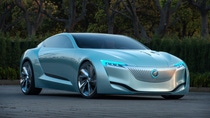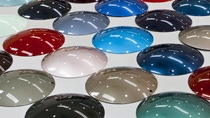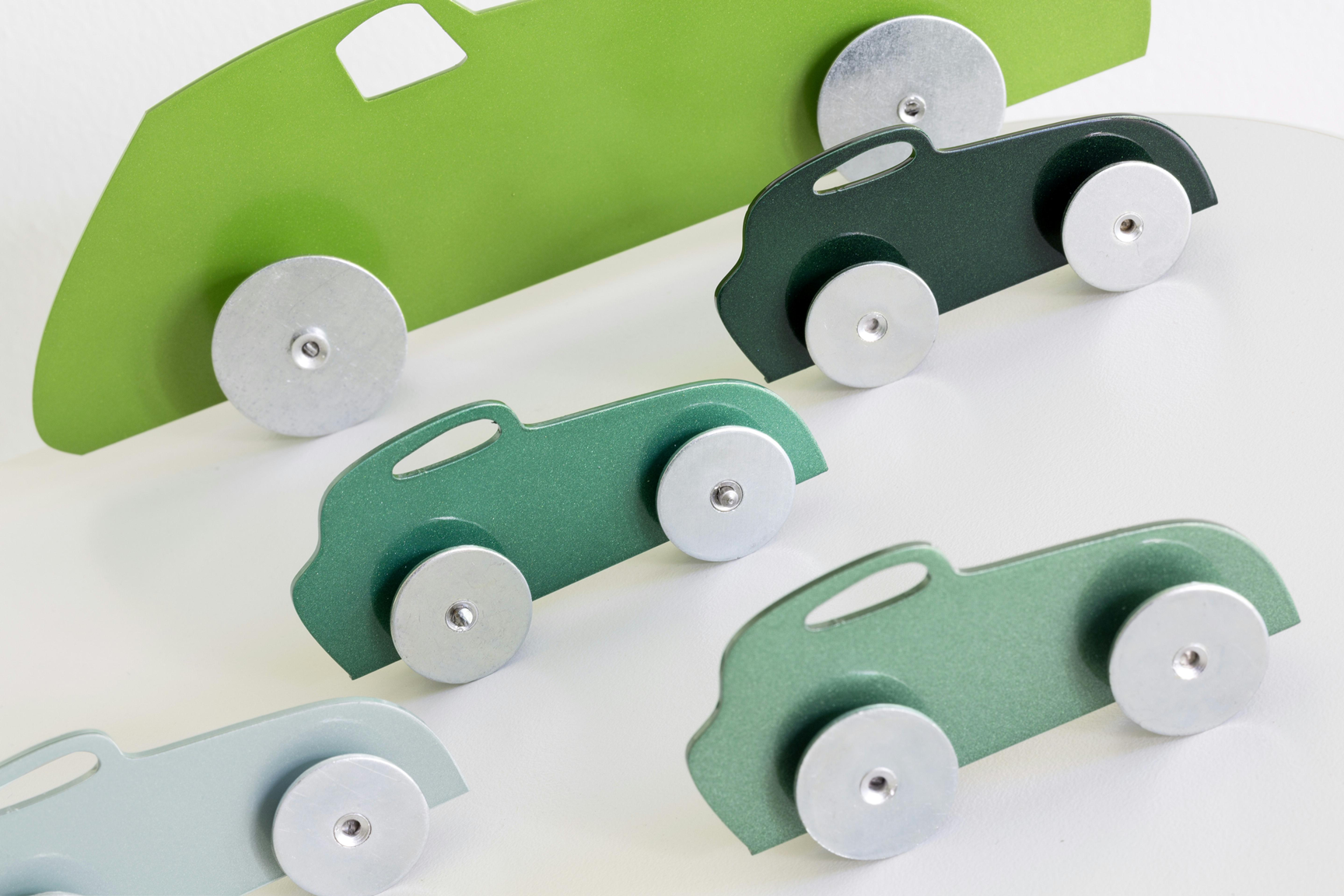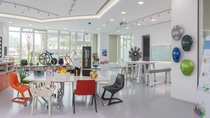Local color design “Making Headway”

How did the color of the new Buick Riviera concept car come into being? How did BASF develop its annual color trend report? BASF’s color designer reveals these secrets for you.
The new Buick Riviera made its global debut in April on the eve of Auto Shanghai 2013. It immediately became a sensation thanks to its futuristic design. In August, the luxury car won the 2013 Red Dot Award, making it the first China-designed model to be honored with such a prestigious international award. Shortly after, BASF’s project team on Shanghai General Motors (SGM) concept car received a thank-you letter from Pan Asia Technical Automobile Center (PATAC), SGM.
The new Riviera features the customized color “Ice Cyan-jade,” developed by color design experts in BASF with the design team at PATAC. Everyone was amazed at its gorgeous color – a graceful jade-like color, refreshing and showing rich color gradation. It appears as if the light aquamarine blue is flowing on the surface. “We didn’t intend to imitate the color of jade. Instead, we demonstrate the essence of jade, which is as gentle and clean as noble characters, via the special coating,” said Vivienne Liu, Color Designer of BASF China. “The overall impression delivered by color is vital.”
Cooperation with SGM yields complete color solution
Last April, Lucy Li, Head of Industry Management Automotive China, BASF, was invited by Min Cao, PATAC’s Chief Designer, to co-design the body color of the new Buick Riviera. “SGM is one of the earliest international automakers to emphasize local design,” Li said. “Since BASF is also committed to localized design, we have been in close Cooperation for years.”
BASF attached importance to the warm invitation from SGM. The local Account Team of BASF Coatings, with the support of Asia Pacific team of automotive coatings and color design center Asia Pacific, presented the achievement of BASF’s color design in Asia Pacific and China to PATAC. BASF color expert Vivienne Liu explained BASF’s annual color trend report and how it will be affected by current social status to the automotive designers at PATAC. “We pointed out that Asian consumers are increasingly aware of local culture and emphasized jade white color, which touched them deeply,” Liu said. Cao added: “The Chinese saying goes: ‘A gentleman’s disposition is as graceful as the luster of jade.’ The elegance of jade is very much in line with the pursuit of graceful and luxurious style in Buick’s aesthetics for the future.”


With an immediate consensus, both parties started their journey to seek color perfection. “Jade symbolizing Chinese gentlemen in the ancient time is respected and adored for its grace and purity,” Liu explained. “However, modern designers do not simply borrow this symbol in their works. Instead it is reinterpreted with modern features. Besides when a color of feelings is used in different objects, proper modification to highlight the overall harmony is extremely important.”
In the following months, BASF worked closely with SGM to make a perfect combination of shape and color. Liu was even invited to PATAC to have a sneak preview of the “confidential” Riviera model under development. “Automotive designers have indicated they want a more eye-catching and futuristic touch to fit the atmosphere at Auto Show, which cannot be achieved with pure white, therefore we added light aquamarine blue,” Liu explained. “Tones are the seasoning of colors. They need to be exactly what we want, no more and no less. That was why the color was only determined the last minute before manufacturing.”
At the same time, BASF design team had to consider feasibility in manufacturing, not just artistic design. Automotive coatings have two purposes: protection and decoration. There will be different requirements for different colors in volume production, and the factors involved in the process are very complicated. “We had to ensure the feasibility of volume production for this color,” she said. “In fact, even different coating methods would lead to different colors. Therefore, what BASF delivered to the customer is a complete solution instead of coatings.”
“Over the years, BASF has been continuously developing local team’s competency in color design and development, with awareness of Chinese auto market’s growing demand for local design and development,” said Li. “The close Cooperation turned out to be very successful and it’s no doubt that the “Ice Cyan-jade” was a breakthrough in the automotive color field.”

Colors reflect local cultures and traditions ‘With Pride’
Since 1992, BASF has published its Asia Pacific Color Trend Report, forecasting the trend in the next two to three years. With China’s booming automotive sector, BASF has accelerated its work in localized color design. Presently, the country is not only the world’s largest auto maker, but also the largest consumer of autos. In 2009, Liu joined the BASF Global Color Design Team as a color designer from China. This year, the global theme is defined as “Making Headway”, and in Asia Pacific “With Pride”.
Coming from a chemical background, Liu joined BASF as a color specialist to formulate colors for customers. After more than a decade’s work, she became involved in almost every aspect of color creation. Over time, and in becoming increasingly sensitive and culture-oriented, she is learning art design at an university during her spare time.
The members of the BASF Global Team come from Germany, Japan, America and China, making it a globally-coordinated network. “We study the local color trend first and generate the global trend based on the local results,” she explained.
She adds that the BASF Color Trend Report is not some kind of artist poll. Instead it represents color trends on the basis of meticulous investigation and scientific methodology. “Color trends cannot be judged by the colors for their own sake. Colors indicate social development and changes: what the society is now and what it will be in the future,” Liu said. “Trend is a progressive course. Observation of the transition and progress helps us think about the future development.”
Sociological changes derived from new things are one of BASF designers’ greatest areas of focus, which include architecture, fashion, art, technology, local markets and important events. She said: “For example, there is increasing attention to presence and the environment after catastrophes. These important events led to the different color trends of different regions.”
Liu also focuses on consumer group research. She points to BASF designers in Asia Pacific who observed the revival of local culture that reflected in changes with local consumers. “People are attaching increasing importance to local culture, and in the fashion world, be it in China, Korea, Thailand, or India. Traditional elements are intensively explored and re-interpreted with contemporary features.”
The trend “With Pride” reflects people’s increasing pride in their own identity and values of their own culture and lifestyle, independent of trends in developed countries. This is not only reflected by the automobile industry but also in all aspects of the whole region.


